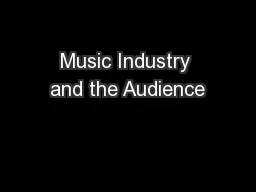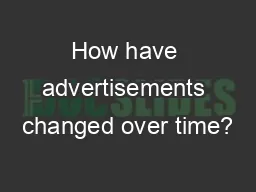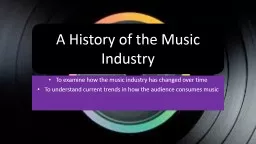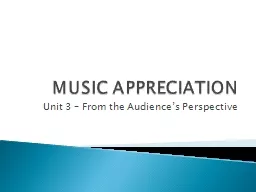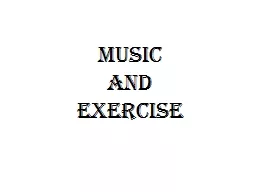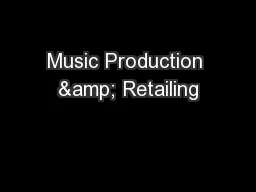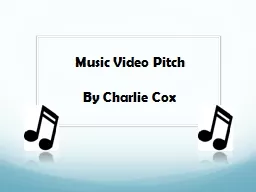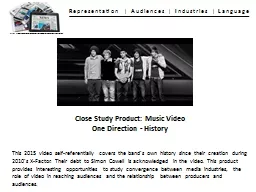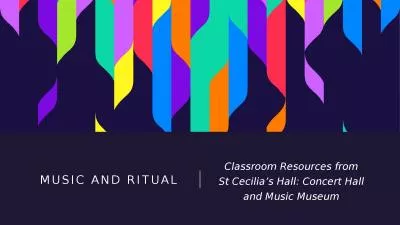PPT-Music Industry and the Audience
Author : tawny-fly | Published Date : 2017-09-18
Changes in the last 15 years One thing to remember For an A grade you will need a clear and developed argument which is supported by detailed case study material
Presentation Embed Code
Download Presentation
Download Presentation The PPT/PDF document "Music Industry and the Audience" is the property of its rightful owner. Permission is granted to download and print the materials on this website for personal, non-commercial use only, and to display it on your personal computer provided you do not modify the materials and that you retain all copyright notices contained in the materials. By downloading content from our website, you accept the terms of this agreement.
Music Industry and the Audience: Transcript
Download Rules Of Document
"Music Industry and the Audience"The content belongs to its owner. You may download and print it for personal use, without modification, and keep all copyright notices. By downloading, you agree to these terms.
Related Documents

